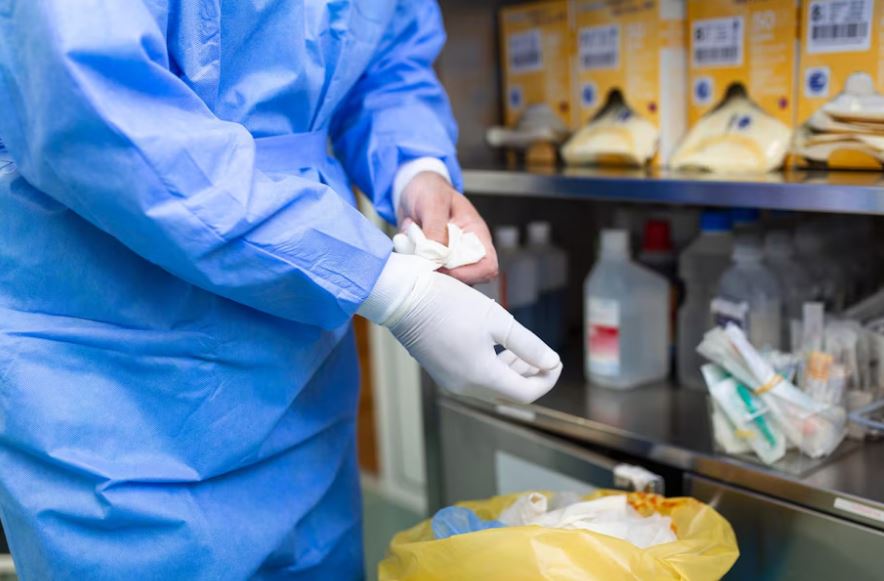
Every piece of reusable equipment in contemporary healthcare has a silent story to tell. What occurs after the procedure is just as important as what occurs during it. The procedures that guarantee that instruments used once can be used safely again are the unsung heroes of infection control.
Hospitals and clinics have created an exceptionally successful medical device safety system by combining tried-and-true techniques with expert-led guidelines. Three essential stages of decontamination—cleaning, disinfection, and sterilization—are at the core of this procedure.
Key Levels of Decontamination – Medical Device Safety Protocols
| Decontamination Level | Purpose | Application |
|---|---|---|
| Cleaning | Remove visible soil, blood, body fluids, and debris | Basic step using detergent, enzymatic cleaners, or ultrasonic washers |
| Disinfection | Reduce or eliminate most disease-causing organisms | Applied using chemical solutions such as alcohols or peracetic acid after cleaning |
| Sterilization | Completely destroy all microbial life, including spores | Uses methods like steam under pressure, gas plasma, ethylene oxide, or dry heat |
Cleaning: The First and Foundational Line of Defense
It just won’t stick if you try to repaint a wall without first cleaning off the old stains. In a similar vein, the first and most important step is cleaning medical equipment. By eliminating organic matter, employees clear the way for subsequent procedures to function efficiently.
Utilizing thermal washers, ultrasonic cleaners, or enzymatic solutions, the industry has discovered a surprisingly low-cost yet extremely effective method to begin decontamination. Notably, this procedure needs to be completed before sterilization or disinfection can be carried out in a safe manner.
Disinfection: Eliminating Imperceptible Dangers
Disinfection takes over to address the invisible after the dirt has been removed. This procedure, which is especially helpful in intermediate-risk devices, such as thermometers or endoscopes, attempts to eradicate dangerous bacteria, viruses, and fungi, though not always bacterial spores.
Healthcare systems have worked with chemical engineers to create disinfectants that are remarkably safe when used properly and remarkably transparent in their intended use. A vital compromise is disinfection, particularly for products that don’t need to be completely sterilized.
Sterilization: Complete Removal of High-Risk Instruments
Sterilization is required for devices like cardiac catheters and surgical scissors; it is not an option. Complete microbial eradication is required for these high-risk instruments that interact with sterile tissues or penetrate the body.
Using low-temperature chemical sterilants, gas plasma systems, and steam autoclaves, technicians can produce results much more quickly and consistently than with outdated, less reliable techniques. It’s science in action, not just safety.
Aligning Method and Risk: The Application of the Spaulding Classification
The 1957-created Spaulding Classification system is still remarkably similar to contemporary best practices in the field of healthcare logistics. Low, intermediate, and high risk items are categorized, and each category is associated with a suitable degree of decontamination.
A blood pressure cuff, for instance, might just require cleaning. However, a vaginal speculum needs to be sterilized as well as disinfected. While upholding the highest standards of patient care, this tiered approach guarantees efficiency.
Sterile Precision Meets Modern Technology
What used to seem like a laborious task has been turned into a precise science by technology. Facilities now use smart sensors and AI-based tracking to log, verify, and validate the status of each reusable item thanks to strategic partnerships with medical manufacturers.
These systems make sure that nothing is overlooked by utilizing data analytics and real-time monitoring, which is a particularly significant advancement in the battle against hospital-acquired infections. The outcomes? a noticeably better safety record across all facilities globally.
Beyond Machines: The Human Factor in Each Sterilized Instrument
A skilled group of experts, including sterile services technicians and decontamination engineers, work behind every sterile instrument, combining expertise and discretion. Similar to pilots, they thoroughly inspect each step before taking off.
The difficulty for novice trainees frequently resides in comprehending not only the “how,” but also the “why.” Giving them clarity and context helps them develop not only their skills but also a culture of accountability. And given the state of healthcare today, that change is especially novel.
In summary, being clean is a requirement, not an option.
Remember this the next time you see shiny metal instruments on a tray in a hospital: their journey was more than just a quick wash. Each of the painstakingly carried out steps had a goal, was accurate, and held promise.
We maintain a standard of care that is not only incredibly resilient but also morally required by honoring the science of decontamination and the individuals who carry it out. Because preparation, not procedure, is where trust in medicine starts.
